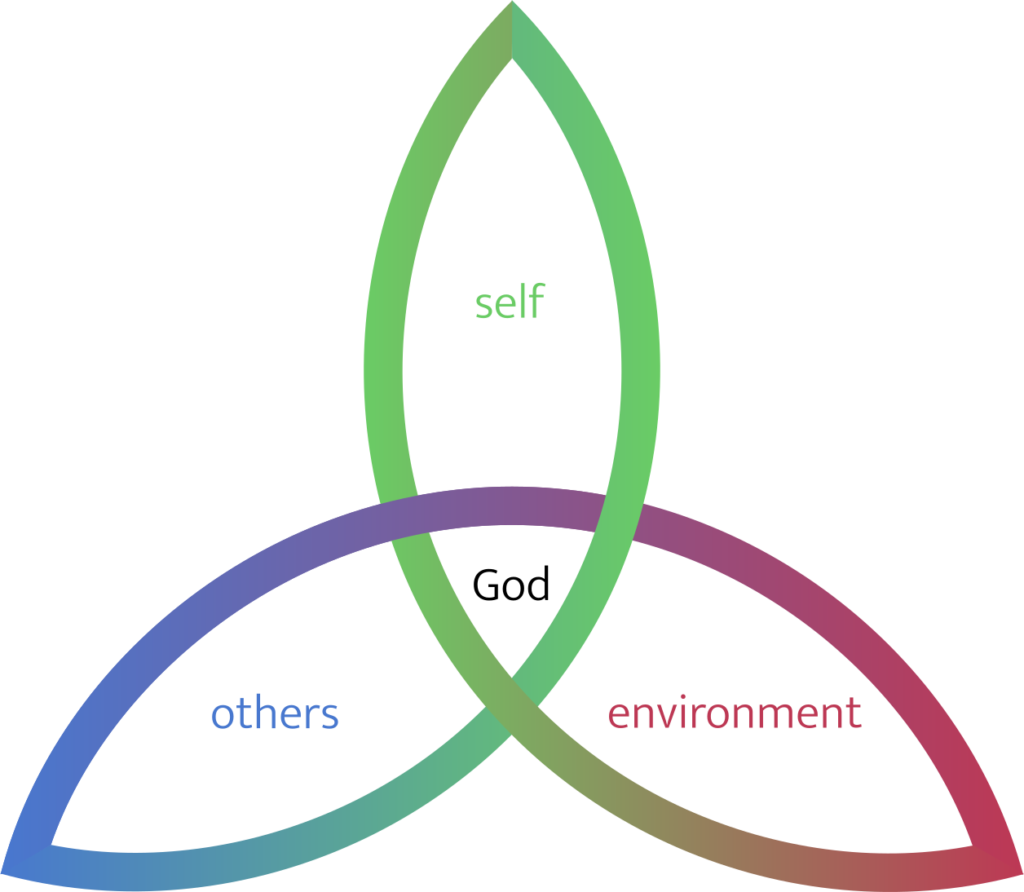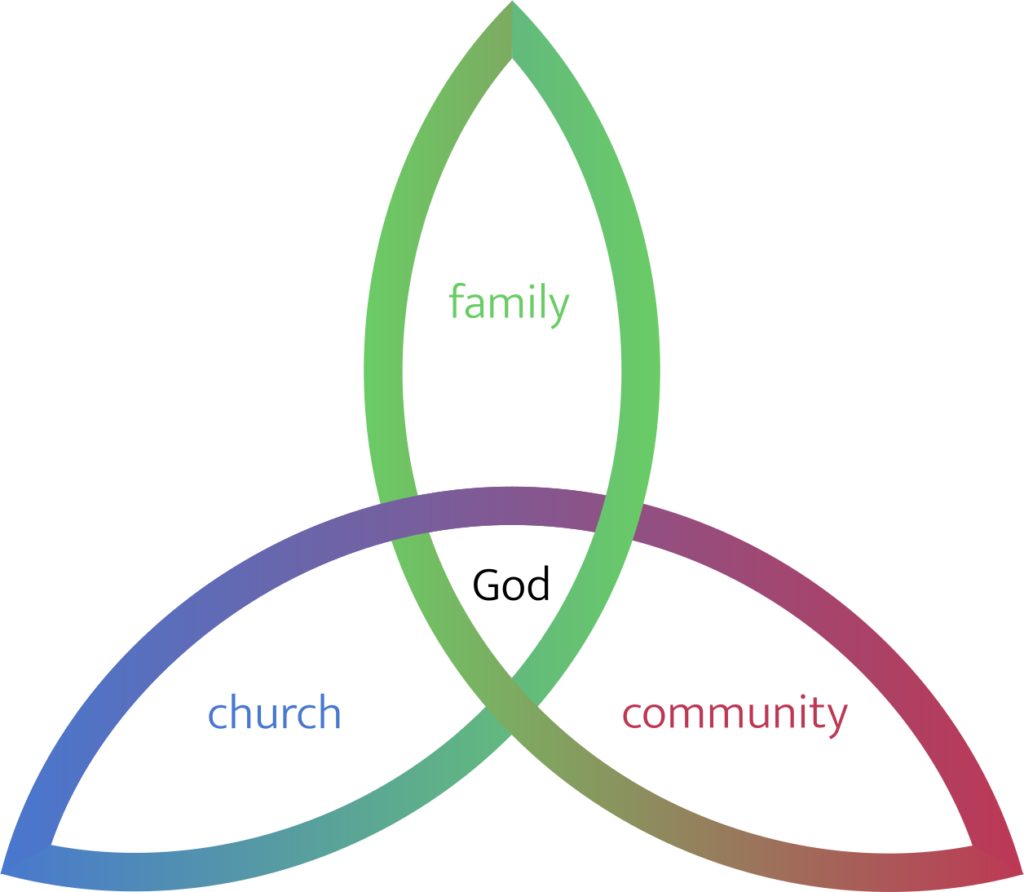Love Wins | 2024 Pastor’s Retreat
“Love Wins”
2024 Pastor’s Retreat
Hugo Monroy and Ben Cheek
April 19-20, 2024
Camp Deerpark | Westbrookville, NY
Itinerary
Friday | April 19
3pm – Camp Opens for Early Arrival / Check-In
8pm – Campfire
Saturday | April 20
8:30am – Breakfast at Spruce Lodge
9:30am – Session 1 Lawlessness and Love
- Bi-lingual Worship & Prayer (20 min; dismiss to language cohort)
- Group Discussion: What has lead to the loss of structure? (40 min)
- Reflect and Relate Small Groups (90 min)
12:30pm – Lunch at Spruce Lodge
2:00pm – Session 2 Restructuring: Abiding in Commands and Love
- Group Discussion: How do we use Jesus’ commands and practices to re-structure for loving? (40 min)
- Workshop: Command to Loving Action (40 min)
- Reflect and Relate Small Groups (60 min)
- Bi-lingual Conclusions & Worship (40 min)
5:30pm – Dinner at Spruce Lodge
6:30pm – Dismissal / Return to NYC
Session Notes
Session 1: Lawlessness and Love
Group Discussion (40 min)
Dwelling in the Word
And because lawlessness will be increased, the love of many will grow cold.
Matthew 24:12 ESV
lawlessness :: ἀνομία | anomia : lit. a- “without” nomia “law, order, usage, custom, melody”; geometrically, all these have the sense of distributed pattern or structure.
Possible paraphrase: “And because of loss of important structures, many people will lose their passion.”
What has led to the loss of structure?
Five Modern and Postmodern “Destructions/Destrucciones” [play on de-structuring]
| VS | Revolution | De-Structuring | Phenomenons |
|---|---|---|---|
CITIZEN Republic-Industrial | Industrial Revolution (1760-1940s-onward)1 | destruction of natural, ecological, and localized structures | Industrialism, Industrial Colonialism2 |
ACHIEVER Meritocracy-Consumer | Individualistic Revolution (1950s-onward) | destruction of communal and economic structures | Consumerism3, Professional Individualism4, mass-media, debt-based economies |
VILLAGE Quorum-Actualization | Counter-Cultural Revolution (1960s-onward) | destruction of cultural structures | Relativism, Absolute Individualism5, “The Storm of Complexity”6, The Nanny State7, Political Correctness |
SYSTEMS Network-Information | Information Revolution (1990s-onward) | destruction of contextual structures (structure of reality) | Virtualization8, Informationalism9, Catastrophic Network-effects10 |
UNIVERSE Cybernets-Technoglobalism | Trans-human Revolution (2010s-onward) | destruction of fundamental human structures (brain, body, biome) | super-fluidity of identity: Liminoid Permanence11 , Trans-humanism12, Bio-tech Cybernetics13, AI Cybernetics14, Identity Politics15 |
How does loss of structure effect love?
Shannon-Weaver Model of Communication

If you think about the model of communication above, and you suppose the message being sent is “I love you”, changes in structure in two areas are critical:
- Encoding the decoding the message as a signal: For example, language is all about structure, so if two people don’t share the same language — the same structure of encoding and decoding — “I love you” with not be the message received. Changes in social structure, especially across culture, generation, and experiences (context) strongly effect the encoding and decoding of love, leading to results and feedback loops that may “cool love” and derail passion. A Gen-X parent who whats to say “I love you” by pushing a child to succeed by taking risks may not be heard if the child’s context is the strong safety/security cultures of late Gen Z and Gen Alpha. The child’s resistance will then discourage the parent leading to a “cooling of love” where neither the parent nor the child hare much passion for the child’s future.
- Channel interfering noise: Noise is unstructured or alternately-structured signal that blocks or mixes with the message signal in the channel. For example, Christians might want to say “Jesus loves you” to people around them, but there is significant interference coming from perceptions of Western Christendom and its involvement in Colonialism, Inequality, Oppression, and Erasure — a common under-current theme of the Metanarrative supporting the critique of dominant culture. A young Gen Z/Alpha person might be thinking, “If Jesus loves me, why don’t you accept me or the people I think should be included with equity?” Or, they might be thinking, “If Jesus loves me, why do his people exploit and erase people, even people like me?”
Reflect and Relate Small Groups (90 min)
Pick one of the frameworks below to think about the four-essential relationships of your life.

God-Self-Others-Environment

God-Family-Church-Community
Personal Reflection: Spend 7 minutes reflecting on the three questions below on your own. Then share your reflections and discuss in a small group of 2-4 people. Please ensure everyone in your group has time to share and process together. While protecting privacy is always important and we want to create a safe space, we’d like to use specific cases, examples, and stories because this can get to the heart of the matter. Remember when responding: people grow most when they are heard, when others are curious about what they think and feel, and when they are allowed space to ask questions and discover their own insights and answers. Feel free to flow into ministry when issues or synergies come up that need spiritual attention.
- Where do you see “love growing cold” in these four relationships? How is this impacting the people involved?
- What loss of structure is disrupting love in these areas?
- When you think about the people involved, what things do they say about what’s happening? Does it seem different depending on the which side is talking (encoding/decoding)? Do you hear external noise interfering with the people’s connection?
Session 2: Restructuring: Abiding in Commands and Love
Group Discussion (40 min)
Dwelling in the Word
‘As the Father has loved me, so have I loved you. Now remain in my love. If you keep my commands, you will remain in my love, just as I have kept my Father’s commands and remain in his love. I have told you this so that my joy may be in you and that your joy may be complete. My command is this: love each other as I have loved you. Greater love has no one than this: to lay down one’s life for one’s friends.
John 15:9-13 NIV
Jesus’ warning about love growing cold in Mathew 24 assumes the “lawlessness” — or loss of structure — is something that will happen in the human world. This is not the only source of structure — Jesus offers us a structure that comes from within through his commands in which we and he can abide together. More than rule keeping, the commands and Way of Jesus is a structure in which we can encounter his presence — we find him and his love as we live in the abode of his commands – like living in the same house with him.
This revives our passion and the passion of those around us as we have the joy of Jesus emanating from within. It makes our joy complete (heals it) because it redeems the things that break our hearts in the world. Notice that the core of this command is not to demand other people adopt and follow our structures, but rather to lay down our lives for each other. The structure missing in the world is corrected, not by arguments and fights about structure, but when we invest the structure of our lives and love in others.
How do we use Jesus’ commands and practices to re-structure for loving?
Often, humans stray into communicating our love in unloving ways or into legalism because we emphasize forms over essence, doing over being. Forms are easier and more automatic because they do not require us to think deeply or spiritually, or expend effort to get to the heart of the matter in relationships. Because of this, we may know and follow the explicit commands of Jesus, but we do not walk in the implicit Way — the essence or way of being — of Jesus. The way Jesus loved people has an essence or a shape to it that is sequential or evolutionary:
- Jesus connected to basic humanity
- He healed and liberated
- He related to people according to their divine identity, purpose, and destiny
Love people by working with them on who they really are and what they really want, especially in light of “the world that ought to be” — The Kingdom of God.
- Jesus loved his people by respected the prevailing systems but refused to get entangled in their idolatry17
- Jesus demonstrated love of imperfect people by being careful to not dismiss problems, but also not condemn people18
- Jesus loved people enough to hold space and tension with people until God’s revelation broke forth19
Love people by your presence and peace in the real tension of their lives, waiting on God’s revelation to transform.
- Jesus loved people by making them participants in his mission
- He used parables, stories, and experiences to produce seed-shaped change
- He emphasized simplicity in love: directness, thrift, hard work, honesty, service, sacrifice
Love people by making them participants in actualizing revelation by working out their own redemption and God’s larger mission.
- Jesus demonstrated a love of service and support
- Jesus showed love as paying forward: “Freely you have received, freely give.”22
- The love of Jesus created a community where people would hold all things in common to benefit the common good of members and the world
Love people buy building platforms of support and sharing benefits as broadly as possible.
Workshop: Command to Loving Action (40 min)
We’ll work as a group to match the issues and situations revealed in our first small group discussion time with the explicit commands and implicit way of Jesus. Participants should bring forward a issue or situation and the group should:
- Match it with an explicit command or Jesus’ implicit way of being
- Share from their own experience stories of when this produced fruit
- Describe what loving in this particular issue or situation could look like
Reflect and Relate Small Groups (90 min)
Spend 15 minutes working on your own. Reflect on your work so far. Answer the questions below about the next steps you’ll take personally or lead others to take. Connect with the small group of 2-4 others and share your answers. Where there is a need for support, make plans to resource and collaborate. Where there is synergy or similar goals, create ways of sharing the journey.
What are you going to commit to do? What will this require to be successful?
Who are you going to involve in this?
How will you use this to grow the practices and capacities of yourself and others in the process?
When and where will you do this?
To what extent will you spread this and what could be the farthest impact?
References & Notes
- Klaus Schwab, founder of the World Economic Forum, has famously iterated four major periods of the Industrial Revolution: 1.0 Mechanization, steam and water power, 2.0 Mass production and electricity, 3.0 Electronic and IT systems, automation, 4.0 Cyber-physical systems. IR 1.0-2.0 was largely completed by the 1940s, though it continues as a foundation for later iterations. IR 3.0 began in the 1950s and continues, followed by IR 4.0 that began in 1990s and continues.
- Here I distinguish Industrial Colonialism from Mercantile Colonialism (1500s-1600s) and Tribute Colonialism (pre-1500s). Tribute Colonialism displaced local rule with imperial rule for the purpose of extracting political power (tribute and taxes), Mercantile Colonialism displaced local trade for the purpose of extracting raw resources from more-or-less intact natural economies. In contrast, Industrial Colonialism displaced local communities in their entirety and processed them toward industrial uses to make all localities into industrial physical plant.
- A key feature of Consumerism is the elevation of demand over supply and production: get the consumer what they want at the fastest speed and lowest cost regardless of impact on the human and natural systems involved in production. This division of consumption and production is directly related to the Carts Before Horses systems error that produces [X] The Maw of unsustainable systems
- A key feature of the Meritocracy is the complete individualization of the worker. Industrialism initially individualized workers by treating them as interchangeable units in a mechanized system, but the emphasis was on the factory as a new kind of national community — the worker was contributing to a create project of progress. World War II and the perceived failure of Modernism and an under-current of class struggle changed the people’s psyche from “serve the system” to “beat the system”, especially in the Capitalistic West. Now in the Consumer Meritocracy, the worker became a public unit rather than a community member and all groups became publics — groups that take collective action to serve common individual interest — not communities. In the same way, the idea of family was reduced from a extended community to the nuclear family — a unit of reduced size for class and geographic mobility that owed no financial loyalty to anyone outside the walls of the home.
- The problems of the Meritocracy-Consumer system were two-fold: the wholesale emphasis on competition tended to accelerate inequalities and the few real avenues of social mobility made people become homogeneous. Both of these prevented self-actualization. The Counter-Cultural Revolution sought to correct this by taking individualism further: people as political/economic units with absolute rights to the services necessary to be liberated from all constraints — both those of the colloquial community and the homogeneous mass of consumer culture. This disintegrated culture into personal preferences — counter-cultures of small niches, as small as the individual or even part of the individual.
- The disintegration of cultural structures lead to the rapid, unpredictable, and constant fragmentation, flattening, and mixing of all things. While this increase in complexity had been an increasing phenomenon in the exploitation of the natural world and economic zone in the previous revolutions, at this point it entered all the intimate areas of life.
- The Quorum-Actualization system saw people as nodes in care-networks where service-rights can be met. What services are right are determined by the professional-scientific quorum of academic-elites whose professional societies establish standards enforced by the state. The near total power of these quorums in certain areas — namely healthcare, public health and safely, education, environmental protection, and land use — gave rise to the term “Nanny State”: an over-bearing government whose emphasis on unjustifiably protecting life and freedom gets in the way of both.
- The previous value system created “networks of care”, treating people as individualized nodes that could self-actualize if their connections delivered sufficient services to them. The information revolution allowed this to be digitized with the goal of delivering services from any context to any context (de-contextualized), moving out of the analog world and all it’s “noise”. Since the digital is representational, virtualization was required — the reduction of all things into de-contextualized models based on “essential virtues” or data-points in profiles link by reference-style relationships.
- A belief system and economic philosophy that views information as primary in terms of essence and power and believes the increase in human capacities to gather, process, and use information is a net good for the species.
- The tendency of de-contextualized entities in networks to create large, unpredictable, uncontrollable, and often destructive effects from smaller perturbations multiplied exponentially
- Various waves of de-structuring have disconnected humans from former contexts that identified them: nature, locality, family, culture, context, etc. This leads to fluid identity — the attempt to construct a self-image from a soup of constantly moving reference points — usually mediated by corporation fueled consumption. In the past, periods of identity disruption were book-ended by community ritual — part of social structure itself; termed Liminal experiences by some sociologists. Now, with such social structures largely dissolved, disruption of identity is more or less permanent for many, thus “Liminoid Permanence”.
- The intentional expansion or redefinition of the meaning and experience of being human, often within a system-hacking paradigm
- Properly defined, cybernetics is the discipline of extending communication and controls across disparate systems — in this case biological and technological systems. This includes medical nano-tech, implants, augmentations, bio-engineering, and other emerging technologies
- AI in communication and control across disparate systems either in a trans-human or post-human political paradigm. While the precursors of this reality are now emerging, most futurists believe things won’t be fully “turned over to the machines” until the emergence of full AGI.
- What began as “political correctness” in the economy of actualization is now an effort to control all possible reference points in the soup of fluid society/culture. This is the driving political force behind Cancel Culture which seeks to eradicate loosely-defined “hate” from all social networks, media, and public spaces. While this political agenda was not previously economically feasible due to labor constraints, AI automation will soon make this possible.
- Space for change is created by tension between the Alpha and Beta of a system between push/pull, aspiration/situation, desire/demand, order/entropy. If the system becomes arranged so that one of these becomes unbalanced in the tension and dominates, the space for change will collapse. Spiritually speaking, tension is required to create a space where God can sow his revelation. Any resolution that attempts to resolve the tension without the revelation of God will necessitate absolutizing one side into an idol. For example, when we absolutize moral judgements over compassion, we create an idol of legalism. In the converse, when we absolutize empathic compassion over righteousness, we create an idol of experience. If instead, we hold compassion and righteousness in tension until God manifests himself in revelation, we get transformation.
- Jesus respected three human systems with great sway over the people’s lives: (1) the ritual system controlled by the Sadducees, (2) the Jewish legal system controlled by the Pharisees and scribes, (3) the Roman governmental system. In his respect, however, he did not get entangled in the idolatry present in these three, nor did he hesitate to criticize, confront, and subvert the excesses of the system stemming from that idolatry.
- Nicodemus, the Woman at the Well, and The Woman Caught in Adultery are all examples of Jesus not ignoring problems and yet not condemning people.
- A great example of this is the raising of Lazarus.
- Seed-shaped means producing change or innovation that — like a seed — (1) carries and is centered on identity, (2) is simple but maintains necessary irreducible complexity, (3) is embedded with enough resources for the identity-innovation to take root, (4) is easily transportable and reproducible.
- For any innovation to be compatible with the Gospel, it must be participatory. If people cannot participate in it, they will not have an integrated experience of becoming one with God — entering into his experience and identity — and the innovation will be performative rather than transformative. See second temptation of [3] Spiritual Warfare, where “testing God” is questioning “is God among us or not”, not recognizing God’s presence in both self and others. If Jesus had thrown himself from the temple, he would have established his Messiah-ship, but with a power that is overwhelming but not service-oriented or participatory, i.e. the magic of celebrity which people envy but in which they cannot participate.
- Mt 10:8





Responses